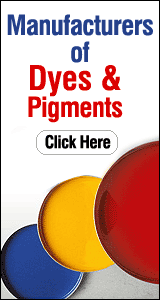There is no doubt about the fact that clothes with matching fashion accessories can greatly enhance your looks. Clothes are not just enough to make your outfit complete. To form an astounding fashion statement, there is the need for wearing some additional distinguishing pieces that will complement your outfit. These are fashion accessories which give the desired look to stand out from the crowd.
Fashion accessories add some detail and style to an outfit. Fashion accessories have become very popular nowadays that they are a part of basic necessity. The most popular fashion accessories loved and used by people are as follows:Jewelries: These are the most well-known fashion. They are a favourite for all ages. All forms of jewelries made of precious metals to the fashionable costume jewelries are demanded in the market. They are available in amazing varieties and their bright colors make them become fascinated. Jewelries are also worn by men in the form of chains, rings, bracelets and watches.
Handbags and Purses: Handbags, clutches, purses are all popular fashion accessories for most women because they consider them as one of their compulsory accessories. Handbags are used to carry their stuffs in a more convenient way, whether in office, market or parties.
Shoes and Sandals:Footwear is one of the most sought after fashion accessories among women. Most of them own numerous pair of shoes with different styles and colors used for complementing their different dresses.
Wearing fashion accessories is indeed a good way of changing your ordinary appearance into such stunning look and also enhancing your wardrobe. However, not all trendy accessories work ideal with your dresses as well as with your figure. So you must be careful in choosing your accessories because if they are not well-complemented with your outfit and body type, they can also turn you down.
Fashion Accessories: The Most Popular Ones
Posted by Vivek Gupta | 8:28 PM | Fashion Accessories | 0 comments »Hydraulic Equipment Mistakes: The 7 Most Common Ones
Posted by Vivek Gupta | 11:08 PM | Hydraulic Equipment Manufacturers, Hydraulic Equipment Marketplace | 0 comments »
- Changing the oil: There are only two conditions that require a hydraulic oil change. When the present oil is degraded or depletion of the additive package. Changing hydraulic oil without any reference to the actual condition of the oil is a big mistake made by the hydraulic users.
- Changing the filters: A similar mistake is done while changing hydraulic filters. If you change them based on schedule, you’re changing them either too late or too early. If you change them early, you’re wasting money on unwanted filter changes. If you change them late, it reduces the service life of every component in the hydraulic system.
- Running too hot: Don't use a over heated hydraulic equipment. Few equipment users continue to operate an engine that is overheating. The most easiest and fastest way to destroy hydraulic components, hoses, seals and the oil itself is when it is operated in high-temperature.
- Using the wrong oil: The oil is the most important component of any hydraulic tool as it is the oil by means of which power is transferred throughout the hydraulic system. Choosing oil without considering viscosity is a common mistake made by hydraulic operators. If you use oil with a high viscosity, the oil won’t flow properly or lubricate adequately. If you use oil with a low viscosity , it won’t maintain the required minimum viscosity.
- Wrong filter locations: There are two hydraulic filter locations that do more harm than good. Wrong placement can rapidly destroy the very components they were installed to protect. These filter locations which should be avoided are the drain lines and pump inlet from the housings of piston pumps and motors.
- Don't think that hydraulic components are self-lubricating and self-priming : If the right steps aren’t followed during initial start-up, hydraulic components and system can be seriously damaged. Maybe for sometime, they may work OK , but the harm induced at start-up then leads them to premature failure.
- Not getting a proper education in hydraulics: If you own, operate, repair or maintain hydraulic equipment and tools, and you do not know anything of the latest hydraulic equipment maintenance practices, then you are wasting a lot of money.
For more information on Hydraulic Equipment & Tools, Hydraulic Machines, Hydraulic Components, Hydraulic Valve, Hydraulic Lifting Equipment, Pumps and Earth Moving Equipments, visit this Web site: Hydraulic Equipment Manufacturers . Get access to free product catalog & suppliers directory. Also find information on global trade events, business trade leads and post free trade leads. This website is an useful B2b marketplace for hydraulic equipment manufacturers, suppliers, exporters and wholesalers.
Primary Types of Industrial Dyes and Pigments
Posted by Vivek Gupta | 3:03 AM | applications of dyes and pigments, dyes and pigments, industrial dyes, primary dyes, types of dyes and pigments | 0 comments » Industrial dyes are quite often used in multiple industries these days; so is the case with pigments. If we talk about industrial dyes, they are basically coloring, ionizing, and aromatic compounds that are used in numerous applications across various industries. Dyes have the property to show an affinity towards the substrate. But, they should be used cautiously because some industrial dyes are toxic and carcinogenic in nature. Anyway, at present, dyes found their application in industries like plastic, cement, cosmetics, rubber, paper, textiles, medicine, to name a few. Some primary varieties of industrial dyes are mentioned under:
Industrial dyes are quite often used in multiple industries these days; so is the case with pigments. If we talk about industrial dyes, they are basically coloring, ionizing, and aromatic compounds that are used in numerous applications across various industries. Dyes have the property to show an affinity towards the substrate. But, they should be used cautiously because some industrial dyes are toxic and carcinogenic in nature. Anyway, at present, dyes found their application in industries like plastic, cement, cosmetics, rubber, paper, textiles, medicine, to name a few. Some primary varieties of industrial dyes are mentioned under:1) Digital Textile Printing Dyes: In digital printing, computer controlled ink-jet nozzles or charged drums are used. The physical surfaces over which the digital prints are reproduced include common paper, photographic paper, plastic, cloth, etc. The popular varieties of dyes used for this purpose are acid inks, disperse inks, reactive inks, and dye based inks.
2) Leather Dyes: Tanneries usually make use of around 50-100 different varieties of leather dyes. Each dye produces a diverse desired effect over the leather. The dyes used in this industry include direct, acid, mordant, reactive, and basic dyes, among others.
3) Optical Brighteners: Also known as optical agents, optical brighteners are the dyes that possess the attribute of absorbing the violet and ultraviolet region of the electromagnetic spectrum, which results in the prominent re-emission of light in the blue region. This dye is not suitable to be used in water (like in aquarium, etc.), due to its toxic nature.
4) Sublimation Dyes: These dyes primarily found their application in various types of printing. They can be found in several forms like inkjet inks, ribbons for thermal transfer, and toner for laser printers. Sublimation dyes are applied by the process called heat-transfer. Their main varieties include acid, disperse, vat, direct, and reactive.
Now, as you might have got some idea about the industrial dyes and their primary varieties, let's discuss about industrial pigments and their types. Pigments are basically the materials that make a modification in the color of the transmitted light owing to their attribute of selective absorption of the wavelength. The change in the transmission of light varies with fluorescence, phosphorescence, as well as with other forms of luminescence, in which a material emits light. Pigments are generally used in inks, coloring paints, cosmetics, eatables, etc. Nowadays there are various types of pigments available in the market, out of which some primary types of pigments are given under:
1) CLC Pigments: Cholesteric Liquid Crystal (CLC) pigments are made from CLC films. These pigments are nowadays increasingly used in security machines and also as an impediment to the counterfeit of currency notes, legal documents, etc.
2) Fluorescent Pigments: These pigments have the quality of changing the ultraviolet light into the desired color. They form the vital element of any kind of fluorescent material. The fluorescent pigments are mostly used in textile field, solvent based paper coating, and paints and aerosol coating.
3) Organic Pigments: Organic pigments consist of solid particles and they are insoluble in the application medium. There are two basic varieties of these pigments, namely natural and synthetic. Organic pigments are generally used for coloring or coating purposes (both decorative and protective) on plastics, candles, paper, rubber materials, pharmaceuticals, etc.
4) Ultramarine Pigments: They are a kind of inorganic pigments, which are non-poisonous and non-irritating in nature. They are also one of the oldest varieties of pigments. They have two basic types, viz., ultramarine blue and ultramarine violet. Ultramarine pigments found their application in coating, coloring, printing inks, cosmetics, and artist colors.
Get familiar with numerous other types of industrial dyes and pigments, along with dyestuffs, dyes intermediates, dyeing processes, and dyeing machinery, by visiting Dyes & Pigments B2B Marketplace.
Subscribe to:
Comments (Atom)







